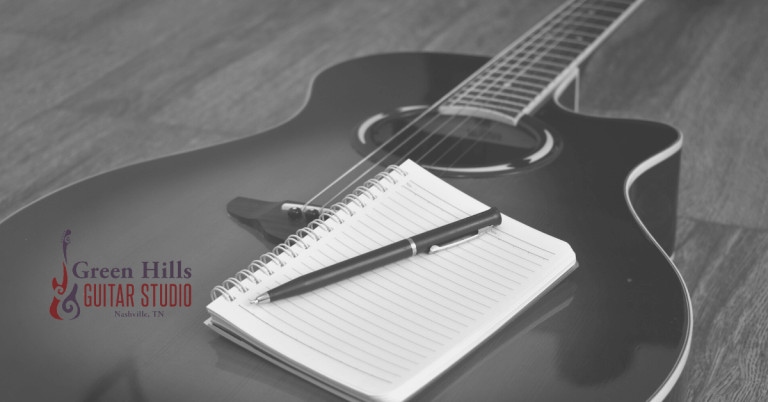Prosody in Lyrics: How to Match Words to Music
Every songwriter has hit that wall where the melody works and the chords feel right, but the lyric won’t sit comfortably on top. It’s close, but something’s missing. That missing piece is usually prosody — the art of matching words to music so rhythm, stress, and meaning line up naturally.
When prosody works, the song feels effortless and emotionally true. When it doesn’t, even strong ideas sound forced. Learning to match words to music gives your songs flow, groove, and phrasing that connects immediately with listeners.
What Prosody Means in Songwriting
In songwriting, prosody is the relationship between the natural rhythm of speech and the structure of the music. It is how stress, syllable count, and timing interact with melody and groove.
When prosody works, the words and melody sound unified. When it fails, a song feels stiff or confusing.
Good prosody example:
“You RAISE me up” — the stress on “raise” matches the strong beat, reinforcing meaning.
Poor prosody example:
“You raise me UP” with the accent on “up” — the stress falls awkwardly, and the phrase loses impact.
Prosody is not about perfection. It is about intention. Matching words to music means paying attention to how language and rhythm fit together.
Stress and Syllables: The Core of Flow
Every word carries a built-in rhythm. When the stress pattern of your lyric conflicts with the beat, the result sounds unnatural.
| Word | Syllables | Natural Stress |
|---|---|---|
| Heaven | 2 | HEA-ven |
| Desire | 2 | de-SIRE |
| Beautiful | 3 | BEAU-ti-ful |
Align stressed syllables with strong beats. This keeps the phrasing musical and easy to sing.
Unnatural phrasing:
“I want to be-AU-ti-ful like you” — the stressed syllable lands on a weak beat.
Improved phrasing:
“I wanna be beau-TI-ful like you” — the natural stress fits the musical pattern.
This small shift is what matching words to music looks like in real time.
How to Match Words to Music Step by Step
- Speak the lyric naturally. Listen for which syllables you stress.
- Tap a simple beat. Notice where those stresses fall against the pulse.
- Align the strong syllables. Place them on the downbeats or longer notes.
- Adjust phrasing. Add or remove small connector words until it sings smoothly.
- Record and refine. Let your ear tell you when the lyric fits the groove.
Matching words to music is less about theory and more about listening. The process trains your instincts until rhythm and language move together automatically.
The Role of Groove in Prosody
Prosody is also about how language sits inside the rhythm. The same line can feel completely different depending on the groove.
- Slow ballad (6/8): “I’ll find my way home again” (feels reflective and tender)
- Funky 4/4 groove: “I’ll find my way home again” (feels restless and confident)
The words are identical, but the rhythmic setting changes their character. When writing, always check how your lyric aligns with the pulse of the song. If the rhythm feels rushed or uneven, adjust either the words or the melody.
Practical Rewrite Example #1: Fixing Stress Patterns
Original:
“You make me FEEL alive inside.”
Both “feel” and “alive” are heavily stressed, which interrupts the flow.
Revised:
“You make me feel so alive inside.”
Adding “so” redistributes the emphasis and restores natural rhythm.
Practical Rewrite Example #2: Balancing Syllables
Original:
“I never wanna see you walking away.”
Too many syllables create tension against the beat.
Revised:
“Don’t wanna watch you walk away.”
The shorter phrasing matches the groove and feels conversational. Matching words to music often means trimming excess syllables so the melody can breathe.
Practical Rewrite Example #3: Aligning Emotion and Melody
Original:
“You broke my heart again today.”
Every word receives equal weight, flattening the emotion.
Revised:
“You broke my heart again today.”
Holding “broke” and “heart” on strong beats focuses the listener’s attention where it belongs. The lyric now carries emotional shape as well as meaning.
Melody and Meaning: The Real Connection
When lyrics and melody support each other, the listener feels the emotion before understanding the words. Matching words to music is about making that connection intuitive.
In Leonard Cohen’s “Hallelujah,” the melody rises on the word “Hallelujah.” The movement itself expresses the word’s meaning.
- Rising melody suggests hope or striving.
- Falling melody suggests acceptance or sorrow.
- Repetition builds persistence or obsession.
Ask yourself: Does your melody reflect the emotion behind your lyric?
If your melody rises when your lyric expresses tension or hope, and falls when it releases or resolves, you’ve created emotional prosody. That contour is what makes listeners feel what the song says before they even process the words.
Common Problems When Matching Words to Music
- Misplaced stress: Accenting filler words like “the” or “and.”
- Fix: Move stressed words to strong beats.
- Too many syllables: Overcrowding a phrase.
- Fix: Simplify or rewrite for space.
- Rhythmic mismatch: A slow lyric over a fast groove.
- Fix: Align tempo and lyric pacing.
- Uneven phrasing: Lines that do not fit the measure.
- Fix: Adjust phrase length or structure.
- Ignoring pauses: Silence carries emotion.
- Fix: Leave room between lines for breath and emphasis.
How to Practice Prosody
- Speak your lyrics before you sing them. If they sound unnatural, they will feel unnatural when performed.
- Tap or clap along with your lyric to find its internal rhythm.
- Record and listen. Misaligned stresses stand out in playback.
- Revise rhythmically. Cut or extend lines to fit the groove.
- Study great songwriters. Listen to how artists like Joni Mitchell or Paul Simon let language shape their melodies.
Try writing a short verse where each line starts with a stressed syllable on beat one. Then rewrite it so the stresses shift to beats two and four. You’ll hear how phrasing alone changes the emotional feel.
For additional revision techniques, visit how to rewrite songs effectively.
To explore emotional nuance, read more about adding emotion to your songwriting.
Prosody Across Genres
Each genre handles prosody differently, but all depend on matching words to music.
- Pop: Tight phrasing and simple stresses create catchy hooks.
- Folk and Country: Conversational rhythm keeps storytelling natural.
- R&B and Jazz: Syncopation and phrasing follow the pocket.
- Rock: Slight tension between lyric and beat adds energy.
Understanding how your genre uses rhythm helps your songs sound authentic and emotionally clear.
Prosody as Emotional Precision
Matching words to music is not only technical. It is emotional accuracy. The shape of the vowels, the placement of consonants, and the way a phrase rides the beat all affect how the listener feels.
When prosody works, meaning and sound become one. The song speaks directly, without effort or confusion.
Conclusion: Learn to Match Words to Music
When lyrics and melody move together, every phrase lands with clarity. The rhythm feels conversational, the emotion feels honest, and the listener stays connected from start to finish.
To learn how to hear and apply prosody in your own writing, take a songwriting or guitar lesson at Green Hills Guitar Studio. Our instructors teach how rhythm, melody, and lyric work together to create songs that flow naturally and connect emotionally.







